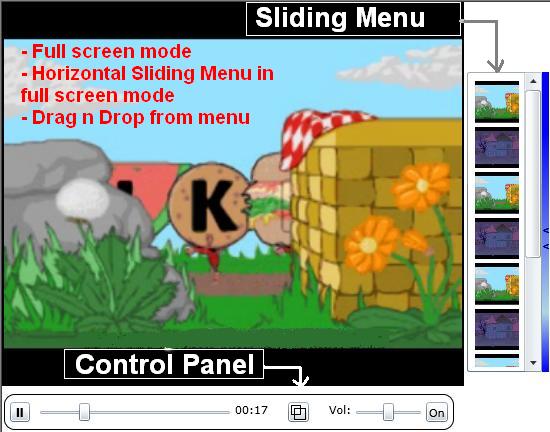Apr 26, 2011 But there is almost always a 'BUT', that even though Silverlight can consume the above container formatsor structures, it can only decode if those file formats are encoded using Windows Media VC-1/H.264 (or equiv. In MPEG-4 part 10 and the MPEG-4 Advanced Video Codec) standards. To make essentially the player have a flexible use model. I could host the player anywhere and just feed it media to play. I used the InitParams feature of the Silverlight plugin model to enable me to pass in parameters to the application. I wanted a simple parameter ‘media’ that basically was a URI to my media. Everytime we open a page with the media player (with the object embed code taken from my silverlight project output html file) the web page scrolls down to where the media player is. I have even created anchors on the page at the top and referenced those directly and it still scrolls to the bottom of the page to focus on the silverlight media. Same as above, but the property may be a list of strings that represent the sources of the media elements. In this case you will need to set the ItemTemplate property of the MediaPlayer to a DataTemplate that will create a new RadMediaItem for each string in the source and bind its source property to the business object (a string from the.
- Microsoft Silverlight Player Free Download
- Microsoft Silverlight Media Player
- Silverlight Media Player Download
Microsoft Silverlight Player Free Download
Description
The objective of this technique is to show how to access an alternate audio channel in a prepared media file that is played in a Silverlight MediaElement.


Silverlight supports media file formats that contains additional audio channels in synchronization, beyond the two tracks for stereo audio that are used by typical media player defaults. Silverlight provides a dedicated AudioStreamIndex API on MediaElement, so that the Silverlight application author can use Silverlight programming techniques to select which audio channel to play for the user. Silverlight control authors might label a UI control with text such as 'Activate this button to listen to an audio-only version of the media presentation' so that the purpose of the media element control interface is clear to the user. That way the same media control can be used to present the media either as audio-video or as audio-only with alternate track depending on user preference at run time.
The media formats that are supported by Silverlight are documented on MSDN.
Media encoding
Microsoft Silverlight Media Player

Silverlight Media Player Download
The process of encoding the media with additional audio channels is not described in this technique because configuring and encoding audio channels for media formats is a technique for any usage of media in a computer application, not just a Silverlight-specific technique or a Web technology technique. For more information on one possible procedure for encoding the media in WMV format, see Microsoft Expression Encoder Overview. Often, Silverlight authors will receive the media from a third party, such as a video production facility, and are not directly involved with the encoding process. Silverlight authors should verify that the media they are using has alternate audio tracks encoded in it. If such tracks exist, Silverlight authors will need a track listing from the media producer to know which of the audio tracks is intended as the alternate audio. Other tracks might exist in the encoded media that provide language translations of the default audio, or that serve other purposes.
